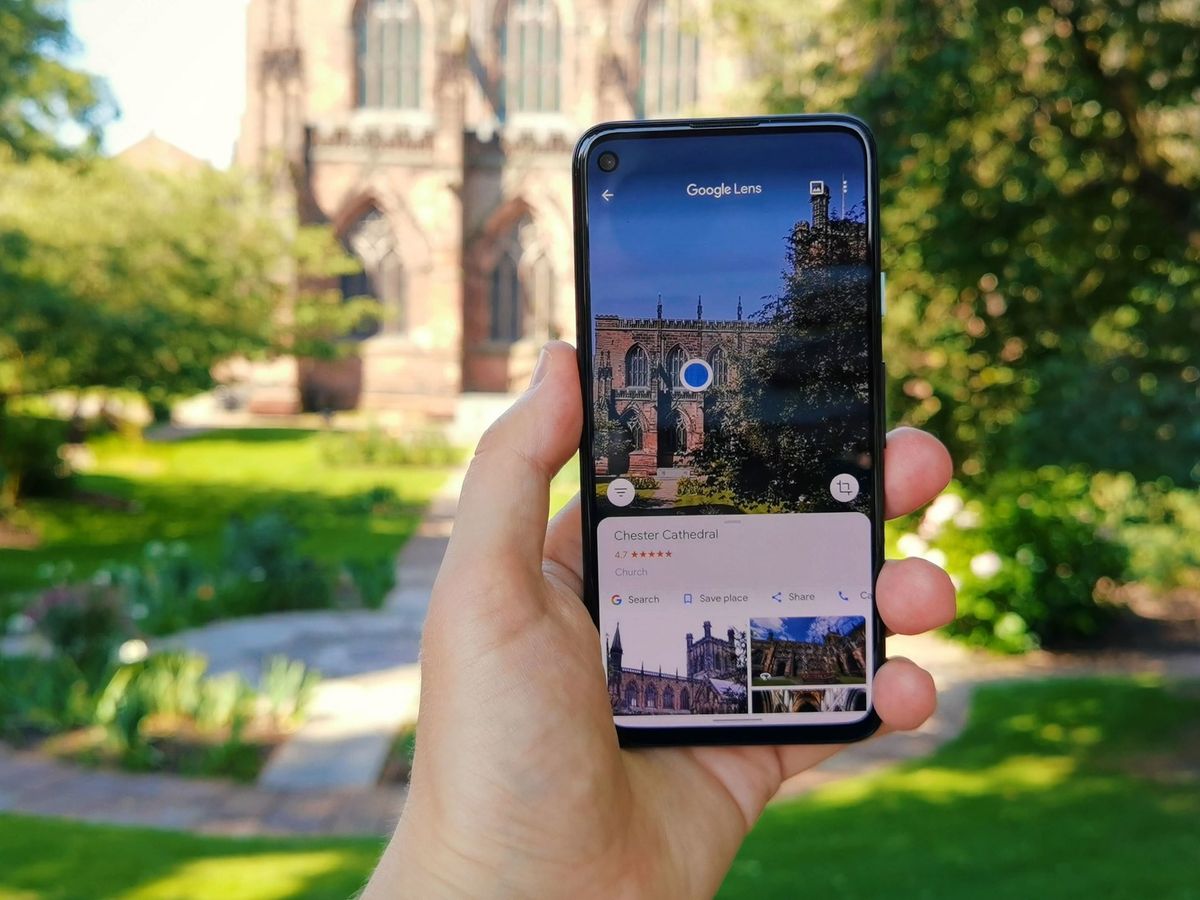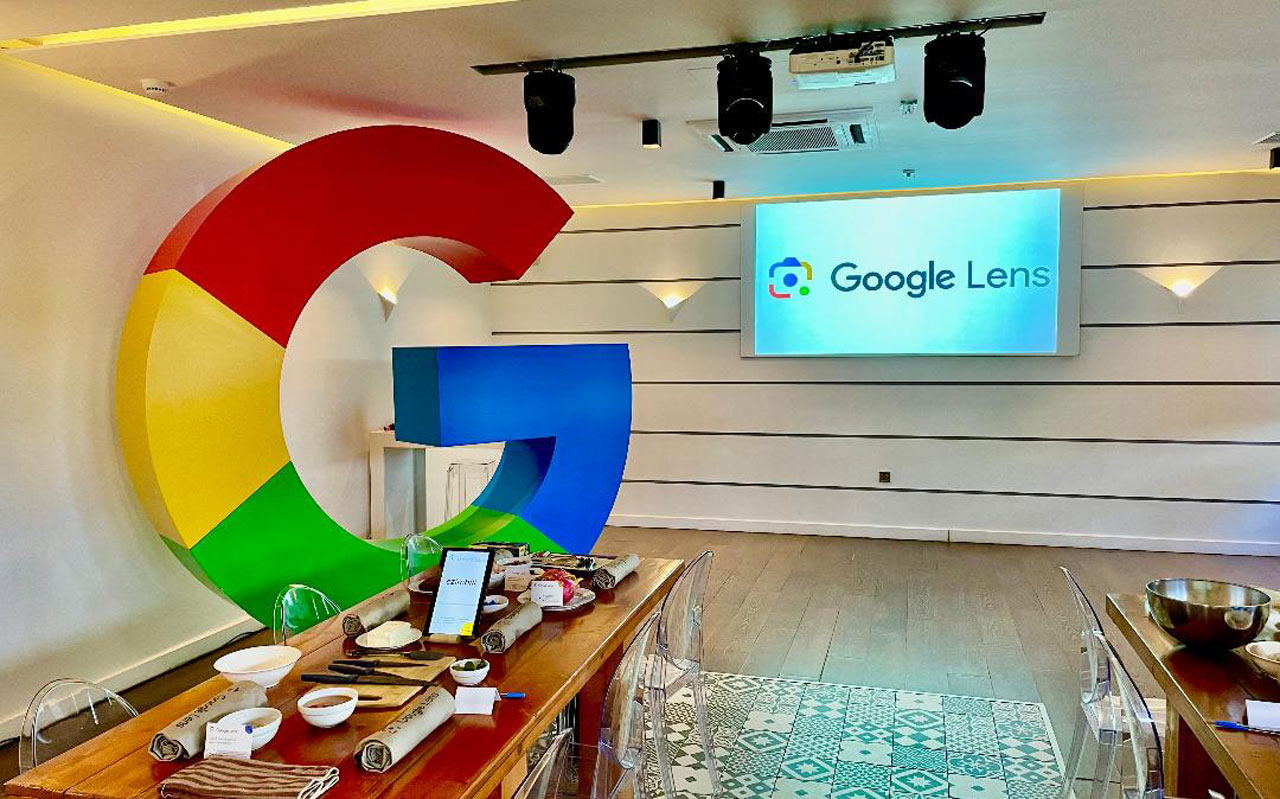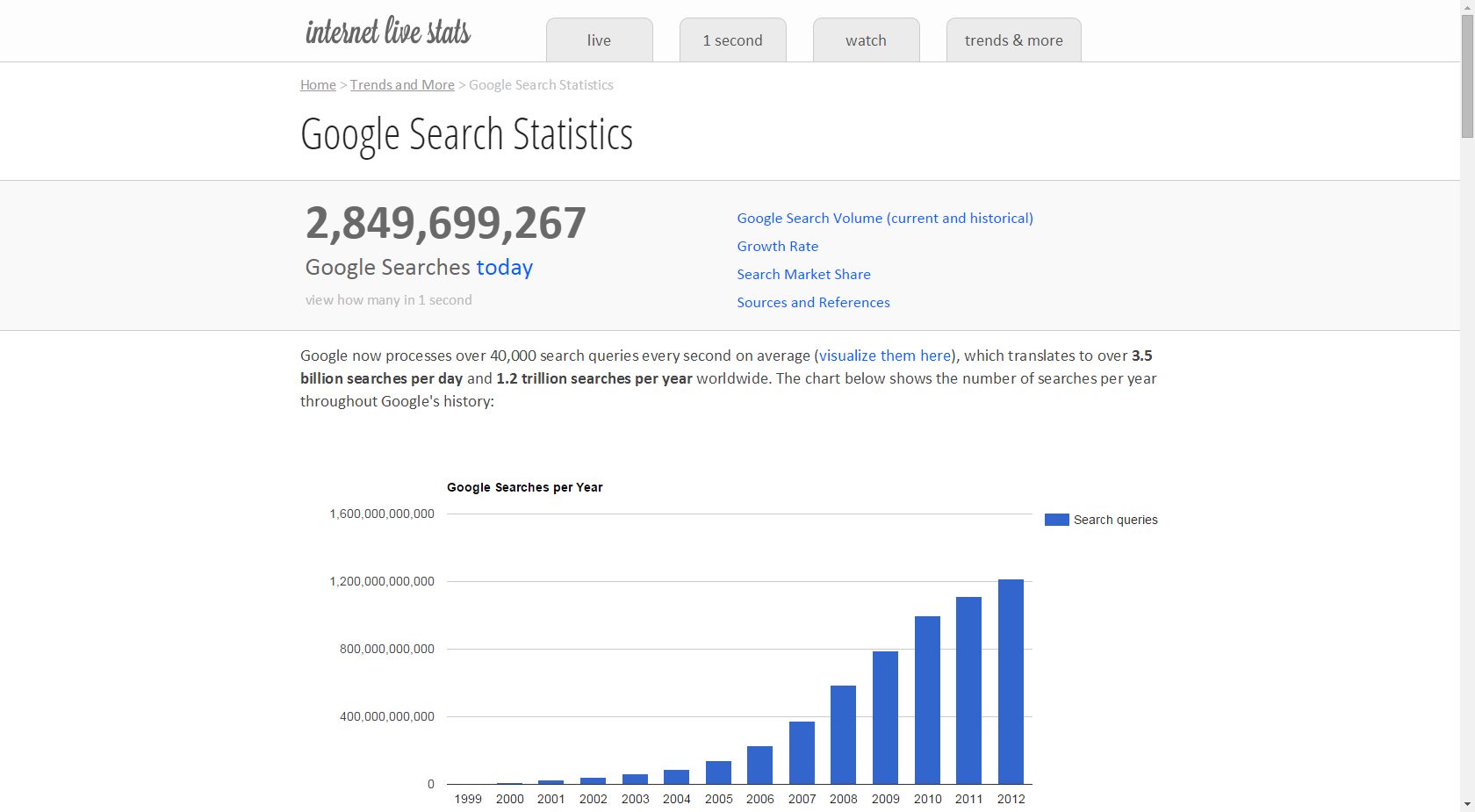The Magic of Reverse Image Search
Reverse image search is a revolutionary technology that allows users to search for information using images instead of text. This innovative feature has been made possible by advancements in artificial intelligence and machine learning. With reverse image search, users can take a picture of an object, person, or place and search for it on the internet to gather more information. This technology has numerous applications in various fields, including education, shopping, and travel.
Google, the leading search engine, has been at the forefront of developing reverse image search technology. Its advanced image recognition algorithm can identify objects, people, and places in images with remarkable accuracy. This technology is integrated into Google’s search engine, allowing users to search for images and get relevant results. To take advantage of this feature, users can simply take a picture and search on Google using the Google Lens app or the Google search bar.
The process of reverse image search is quite fascinating. When a user uploads an image or takes a picture, the algorithm breaks it down into smaller components, analyzing shapes, colors, and textures. This information is then compared to a vast database of images to find matches. The algorithm can even identify objects or people in images that are partially occluded or distorted.
Reverse image search has numerous benefits, including the ability to identify unknown objects or people, find similar products or images, and even track down the source of an image. This technology has also opened up new possibilities for education, allowing students to learn about different subjects in a more interactive and engaging way.
As the technology continues to evolve, we can expect to see even more innovative applications of reverse image search. For instance, it could be used to develop more sophisticated image recognition systems for security and surveillance. Additionally, it could be integrated into virtual reality and augmented reality platforms to create more immersive experiences.
Overall, reverse image search is a powerful tool that has the potential to revolutionize the way we search for information. With its ability to identify objects, people, and places in images, it has numerous applications in various fields. As the technology continues to evolve, we can expect to see even more innovative uses of reverse image search.
How to Use Google Lens to Search with Images
Google Lens is a powerful visual search app that allows users to take a picture and search on Google for more information. To use Google Lens, follow these simple steps:
1. Download and install the Google Lens app from the Google Play Store or Apple App Store.
2. Open the app and grant it access to your camera.
3. Take a picture of the object, person, or place you want to search for.
4. Google Lens will analyze the image and provide search results, including text recognition, object detection, and shopping information.
Google Lens is a versatile app that can be used in various ways. For example, you can use it to:
Identify plants and animals: Take a picture of a plant or animal, and Google Lens will provide information on its species, habitat, and characteristics.
Scan barcodes and QR codes: Google Lens can scan barcodes and QR codes to provide information on products, prices, and reviews.
Translate text: Take a picture of text in a foreign language, and Google Lens will translate it into your native language.
Shop online: Google Lens can identify products and provide shopping information, including prices, reviews, and availability.
Google Lens is a powerful tool that can simplify our lives and provide instant answers to our questions. By following these simple steps, you can unlock the power of visual search and take advantage of the many features and capabilities of Google Lens.
In addition to Google Lens, there are other visual search apps available, including Bing Visual Search, Amazon Rekognition, and Pinterest Lens. Each of these apps has its own unique features and capabilities, and can be used in different ways to enhance your visual search experience.
Alternative Apps for Visual Search
While Google Lens is a powerful visual search app, there are other alternatives available that offer similar features and capabilities. Some of these apps include Bing Visual Search, Amazon Rekognition, and Pinterest Lens.
Bing Visual Search is a visual search app developed by Microsoft that allows users to search for images and get relevant results. It uses advanced image recognition technology to identify objects, people, and places in images. Bing Visual Search also offers features like text recognition, object detection, and shopping information.
Amazon Rekognition is a deep learning-based image analysis service that can identify objects, people, and text in images. It can also detect faces, emotions, and age ranges. Amazon Rekognition is commonly used in e-commerce and retail applications to enhance customer experience and increase sales.
Pinterest Lens is a visual search app that allows users to take a picture of an object or product and get relevant results on Pinterest. It uses advanced image recognition technology to identify objects and provide shopping information, including prices, reviews, and availability.
These alternative apps offer similar features and capabilities to Google Lens, but with some differences. For example, Bing Visual Search has a more comprehensive database of images, while Amazon Rekognition has more advanced image analysis capabilities. Pinterest Lens, on the other hand, is more focused on shopping and e-commerce applications.
When choosing a visual search app, it’s essential to consider the specific features and capabilities that are important to you. If you’re looking for a more comprehensive database of images, Bing Visual Search may be the better choice. If you’re looking for more advanced image analysis capabilities, Amazon Rekognition may be the better choice. If you’re looking for a more shopping-focused app, Pinterest Lens may be the better choice.
Ultimately, the choice of visual search app depends on your specific needs and preferences. By considering the features and capabilities of each app, you can make an informed decision and choose the app that best suits your needs.
Real-World Applications of Visual Search
Visual search has numerous practical applications in everyday life, making it a valuable tool for individuals and businesses alike. One of the most significant advantages of visual search is its ability to identify objects, people, and places. This feature can be particularly useful in various fields, including education, shopping, and travel.
In education, visual search can be used to identify plants, animals, and other objects in the natural world. For example, students can take a picture of a leaf and use visual search to identify the plant species, learn about its habitat, and discover its uses. This interactive approach to learning can make education more engaging and fun.
In shopping, visual search can be used to identify products and get information about prices, reviews, and availability. For instance, a customer can take
Real-World Applications of Visual Search
Visual search has numerous practical applications in everyday life, making it a valuable tool for individuals and businesses alike. One of the most significant advantages of visual search is its ability to identify objects, people, and places. This feature can be particularly useful in various fields, including education, shopping, and travel.
In education, visual search can be used to identify plants, animals, and other objects in the natural world. For example, students can take a picture of a leaf and use visual search to identify the plant species, learn about its habitat, and discover its uses. This interactive approach to learning can make education more engaging and fun.
In shopping, visual search can be used to identify products and get information about prices, reviews, and availability. For instance, a customer can take a picture of a product in a store and use visual search to find similar products online, read reviews, and compare prices. This feature can enhance the shopping experience and make it more convenient.
In travel, visual search can be used to identify landmarks, monuments, and other points of interest. For example, a tourist can take a picture of a building and use visual search to learn about its history, architecture, and cultural significance. This feature can make travel more enjoyable and informative.
Visual search can also be used in other fields, such as art, architecture, and design. For instance, an artist can take a picture of a painting and use visual search to identify the artist, style, and period. An architect can take a picture of a building and use visual search to identify the architectural style, materials, and design elements.
Furthermore, visual search can be used to solve everyday problems, such as identifying unknown objects or finding similar products. For example, a person can take a picture of a broken appliance and use visual search to find similar products or identify the manufacturer. This feature can save time and effort
Real-World Applications of Visual Search
Visual search has numerous practical applications in everyday life, making it a valuable tool for individuals and businesses alike. One of the most significant advantages of visual search is its ability to identify objects, people, and places. This feature can be particularly useful in various fields, including education, shopping, and travel.
In education, visual search can be used to identify plants, animals, and other objects in the natural world. For example, students can take a picture of a leaf and use visual search to identify the plant species, learn about its habitat, and discover its uses. This interactive approach to learning can make education more engaging and fun.
In shopping, visual search can be used to identify products and get information about prices, reviews, and availability. For instance, a customer can take a picture of a product in a store and use visual search to find similar products online, read reviews, and compare prices. This feature can enhance the shopping experience and make it more convenient.
In travel, visual search can be used to identify landmarks, monuments, and other points of interest. For example, a tourist can take a picture of a building and use visual search to learn about its history, architecture, and cultural significance. This feature can make travel more enjoyable and informative.
Visual search can also be used in other fields, such as art, architecture, and design. For instance, an artist can take a picture of a painting and use visual search to identify the artist, style, and period. An architect can take a picture of a building and use visual search to identify the architectural style, materials, and design elements.
Furthermore, visual search can be used to solve everyday problems, such as identifying unknown objects or finding similar products. For example, a person can take a picture of a broken appliance and use visual search to find similar products or identify the manufacturer. This feature can save time and effort
Real-World Applications of Visual Search
Visual search has numerous practical applications in everyday life, making it a valuable tool for individuals and businesses alike. One of the most significant advantages of visual search is its ability to identify objects, people, and places. This feature can be particularly useful in various fields, including education, shopping, and travel.
In education, visual search can be used to identify plants, animals, and other objects in the natural world. For example, students can take a picture of a leaf and use visual search to identify the plant species, learn about its habitat, and discover its uses. This interactive approach to learning can make education more engaging and fun.
In shopping, visual search can be used to identify products and get information about prices, reviews, and availability. For instance, a customer can take a picture of a product in a store and use visual search to find similar products online, read reviews, and compare prices. This feature can enhance the shopping experience and make it more convenient.
In travel, visual search can be used to identify landmarks, monuments, and other points of interest. For example, a tourist can take a picture of a building and use visual search to learn about its history, architecture, and cultural significance. This feature can make travel more enjoyable and informative.
Visual search can also be used in other fields, such as art, architecture, and design. For instance, an artist can take a picture of a painting and use visual search to identify the artist, style, and period. An architect can take a picture of a building and use visual search to identify the architectural style, materials, and design elements.
Furthermore, visual search can be used to solve everyday problems, such as identifying unknown objects or finding similar products. For example, a person can take a picture of a broken appliance and use visual search to find similar products or identify the manufacturer. This feature can save time and effort
Real-World Applications of Visual Search
Visual search has numerous practical applications in everyday life, making it a valuable tool for individuals and businesses alike. One of the most significant advantages of visual search is its ability to identify objects, people, and places. This feature can be particularly useful in various fields, including education, shopping, and travel.
In education, visual search can be used to identify plants, animals, and other objects in the natural world. For example, students can take a picture of a leaf and use visual search to identify the plant species, learn about its habitat, and discover its uses. This interactive approach to learning can make education more engaging and fun.
In shopping, visual search can be used to identify products and get information about prices, reviews, and availability. For instance, a customer can take a picture of a product in a store and use visual search to find similar products online, read reviews, and compare prices. This feature can enhance the shopping experience and make it more convenient.
In travel, visual search can be used to identify landmarks, monuments, and other points of interest. For example, a tourist can take a picture of a building and use visual search to learn about its history, architecture, and cultural significance. This feature can make travel more enjoyable and informative.
Visual search can also be used in other fields, such as art, architecture, and design. For instance, an artist can take a picture of a painting and use visual search to identify the artist, style, and period. An architect can take a picture of a building and use visual search to identify the architectural style, materials, and design elements.
Furthermore, visual search can be used to solve everyday problems, such as identifying unknown objects or finding similar products. For example, a person can take a picture of a broken appliance and use visual search to find similar products or identify the manufacturer. This feature can save time and effort







/advanced-google-search-3482174-V1-3c4eedbd4dcf46268e8f64e5e01df8c5.jpg)